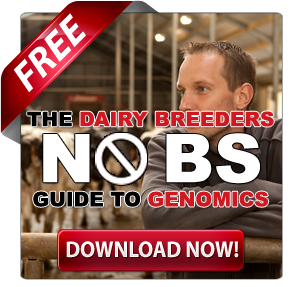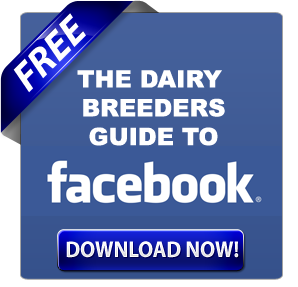Dairy’s billion-dollar battle: Farmers vs. processors over cheese yields’ 12.5% surge. Who profits?
EXECUTIVE SUMMARY: The U.S. dairy industry has seen a 12.5% surge in cheese yields since 2010, driven by higher butterfat (4.23%) and protein (3.29%) levels in milk. This shift adds $2.50+ in value per hundredweight, fueling a $8 billion processor expansion. However, farmers argue outdated Federal Milk Marketing Orders (FMMOs) undervalue their contributions, with 58% of milk checks tied to butterfat and 31% to protein. The USDA’s 2025 FMMO reforms aim to modernize pricing but delay risk perpetuating inequities. Higher yields also offer environmental benefits, reducing water and feed use. The industry faces a crossroads: equitable value distribution or prolonged conflict between producers and processors.
KEY TAKEAWAYS
- 12.5% cheese yield surge since 2010 drives billion-dollar value shift, with 100 lbs milk now yielding 11.41 lbs cheese.
- Farmers demand fair pay for higher components as processors expand capacity; 58% of milk checks are tied to butterfat.
- 2025 FMMO reforms modernize pricing (e.g., 91% butterfat recovery, updated make allowances), but delays spark equity debates.
- Sustainability wins: Higher yields cut water, feed, and land use, boosting export competitiveness.
- Call to action: Transparent pricing, advocacy for FMMO updates, and direct marketing urged to capture value.

In a dairy industry where margins are measured in tenths of a percent, the 12.5% surge in cheese yields since 2010 has sparked a gold rush—and a fierce debate over who deserves the treasure. As butterfat and protein levels reach unprecedented heights, dairy farmers and processors are locked in a battle for value, with billions at stake.
The Component Revolution: From Plateau to Profit Goldmine

For six decades, the dairy industry operated on a simple truth: 100 pounds of milk reliably yielded 10 pounds of cheese. This consistency was rooted in milk’s composition, which held butterfat steady at 3.65–3.69% and protein at 3% from the 1950s to 2010. But the past 15 years have rewritten the rulebook.
Butterfat levels now average 4.23%, a 16% jump since 2010, while protein has climbed to 3.29%. These gains—driven by genetic advancements, precision nutrition, and regional specialization—have transformed the economics of cheese production. Today, 100 pounds of milk yield 11.41 pounds of cheese, a 12.5% increase from 2010. At current wholesale prices, this shift adds roughly $2.50 in value per hundredweight of milk—a windfall worth billions annually.
Regional Leaders: The Pacific Northwest leads the charge, with butterfat averaging 4.3% and protein at 3.4%. The Upper Midwest, once a laggard, now boasts 4.12% butterfat and 3.22% protein. These disparities highlight growing competitive advantages for producers in high-component regions.
Processing Perfection vs. Real-World Reality

The 11.41-pound figure represents “processing perfection,” but debate rages over its feasibility. At the 2024 International Dairy Foods Association’s Dairy Forum, processors split into three camps:
- Skeptics: Argued that capturing all solids is impossible due to whey losses.
- Optimists: Claimed yields could exceed 12 pounds with advanced techniques.
- Pragmatists: Accepted the metric as a benchmark for efficiency.
Case Study: One processor reduced daily milk intake by two semi-truckloads while maintaining output by optimizing solids capture. Another executive reported achieving 12 pounds of cheese per 100 pounds of milk in 2023, citing superior regional components and refined processes.
The Billion-Dollar Question: Who Profits from Higher Yields?

While farmers engineered this revolution, processors are capitalizing on its spoils. The dairy industry is investing $8 billion in new plants through 2026, aggressively expanding cheese production capacity. Meanwhile, milk prices remain stagnant, raising questions about fair compensation.
The Math of Inequity:
- 58% of milk check revenue now comes from butterfat alone.
- Protein contributes 31%, leaving just 11% tied to volume.
- Yet, Federal Milk Marketing Orders (FMMOs) still use outdated component standards set in 2010.
Farmers’ Frustration: “We’re producing milk that’s worth more per pound, but our checks aren’t reflecting that,” says Tom H., a Wisconsin producer who boosted herd butterfat from 3.8% to 4.4% in five years. “Our income per cow is up 15%, but imagine what we could achieve with fair pricing.”
The Future of FMMOs: 2025 Reforms Bring Modernization
The USDA’s final rule amending all 11 FMMOs, effective June 1, 2025, represents the most significant pricing overhaul in decades. Key changes include:
Table 1: 2025 FMMO Amendments – Key Changes
| Category | Current Standard | 2025 Amendment |
| Milk Composition Factors | 3.25% true protein, 5.75% other solids | 3.3% true protein, 6% other solids, 9.3% nonfat solids |
| Class I Pricing | “Higher-of” Class III/IV | Class III or IV skim milk price |
| Make Allowances | Varies by product | $0.2519/lb for cheese, $0.2272/lb for butter, $0.2393/lb for NFDM, $0.2668/lb for dry whey |
| Butterfat Recovery | 90% in Class III formulas | 91% recovery rate |
Implementation Timeline:
- June 1, 2025: Most changes take effect, including updated make allowances and Class I pricing.
- Dec. 1, 2025: Skim milk composition factors updated to reflect modern component levels.
Referendum Approval:
- Producer Majority: Two-thirds of voting producers in each FMMO approved the amendments.
- Volume Majority: Two-thirds of the pooled milk volume in each FMMO supported the reforms.
Industry Reactions:
- Gregg Doud (NMPF): “This final plan will provide a firmer footing and fairer milk pricing, which will help the dairy industry thrive.”
- Michael Dykes (IDFA): Supported reforms to modernize pricing structures.
Sustainability’s Silver Lining

Higher yields aren’t just a profit play but an environmental win. With more cheese from less milk:
- Water Use Drops: Less milk needed per pound of cheese reduces processing water consumption.
- Feed Efficiency Improves: Cows producing higher-component milk may require less feed per output unit.
- Export Competitiveness: Lower unit costs make U.S. cheese more competitive globally.
Market Growth: Cheese, butter, and yogurt sales have surged 15.4% ($10.1B) over three years, driven by innovation and convenience trends. Higher component yields directly fuel this growth, as seen in CoBank’s analysis of dairy market expansion.
The Value Capture Formula: Are You Getting Paid for Your Genetics?

To assess whether you’re capturing the actual value of your components, use this simplified model:
- Calculate Component Gains:
- Butterfat: (Current test – 3.65%) × 2.5 (pounds of cheese per 0.1% increase)
- Protein: (Current test – 3.00%) × 1.2 (pounds of cheese per 0.1% increase)
- Multiply by Milk Volume:
- Total cheese gain = (Butterfat + Protein gains) × Hundredweights produced
- Compare to Component Premiums:
- Subtract premiums from projected cheese value to identify gaps.
Example: A 1,000-cow herd producing 4.2% butterfat and 3.3% protein:
- Butterfat Value: (4.2 – 3.65) × 2.5 × 1,000 cwt = $2,750/month
- Protein Value: (3.3 – 3.0) × 1.2 × 1,000 cwt = $420/month
- Total: $3,170/month in unclaimed value if premiums lag.
The Bottom Line
The dairy industry’s component revolution is irreversible. Farmers have proven they can drive genetic and nutritional excellence. Now, the fight is over who controls the profits.
For Farmers: Prioritize components over volume. Invest in genetics, nutrition, and data tools to maximize butterfat and protein. Calculate your actual value and demand fair compensation.
For Processors: Share the spoils. Transparency in pricing and partnerships with progressive producers will ensure long-term supply chain resilience.
For Regulators: Update FMMO standards now. Delaying recognition of today’s milk composition exacerbates inequities.
The cheese yield explosion isn’t just about numbers—it’s about justice. One processor quipped, “If you’re not making more cheese per vat, you’re losing money. If farmers aren’t making more money per cow, they’re losing patience.” The industry must continue the status quo or forge a future where value flows equitably from farm to factory.
Learn more
- Is the Federal Milk Marketing Order Reform Benefiting Dairy Farmers or Only the Processors?
Explores tensions between farmers and processors over FMMO reforms, including referendum outcomes and pricing fairness. - Cheese Makers Crushing It While Powder Pushers Panic: Global Dairy Trade Signals Market Divide
Analyzes the cheese vs. powder market divide, highlighting regional advantages and strategies for capturing cheese premiums. - Why Milk Components Trump Production in Unlocking Profits
Details the shift from volume to component-focused dairy farming, with genetic strategies to maximize butterfat and protein.
 Join the Revolution!
Join the Revolution!
Join over 30,000 successful dairy professionals who rely on Bullvine Daily for their competitive edge. Delivered directly to your inbox each week, our exclusive industry insights help you make smarter decisions while saving precious hours every week. Never miss critical updates on milk production trends, breakthrough technologies, and profit-boosting strategies that top producers are already implementing. Subscribe now to transform your dairy operation’s efficiency and profitability—your future success is just one click away.







 Join the Revolution!
Join the Revolution!




